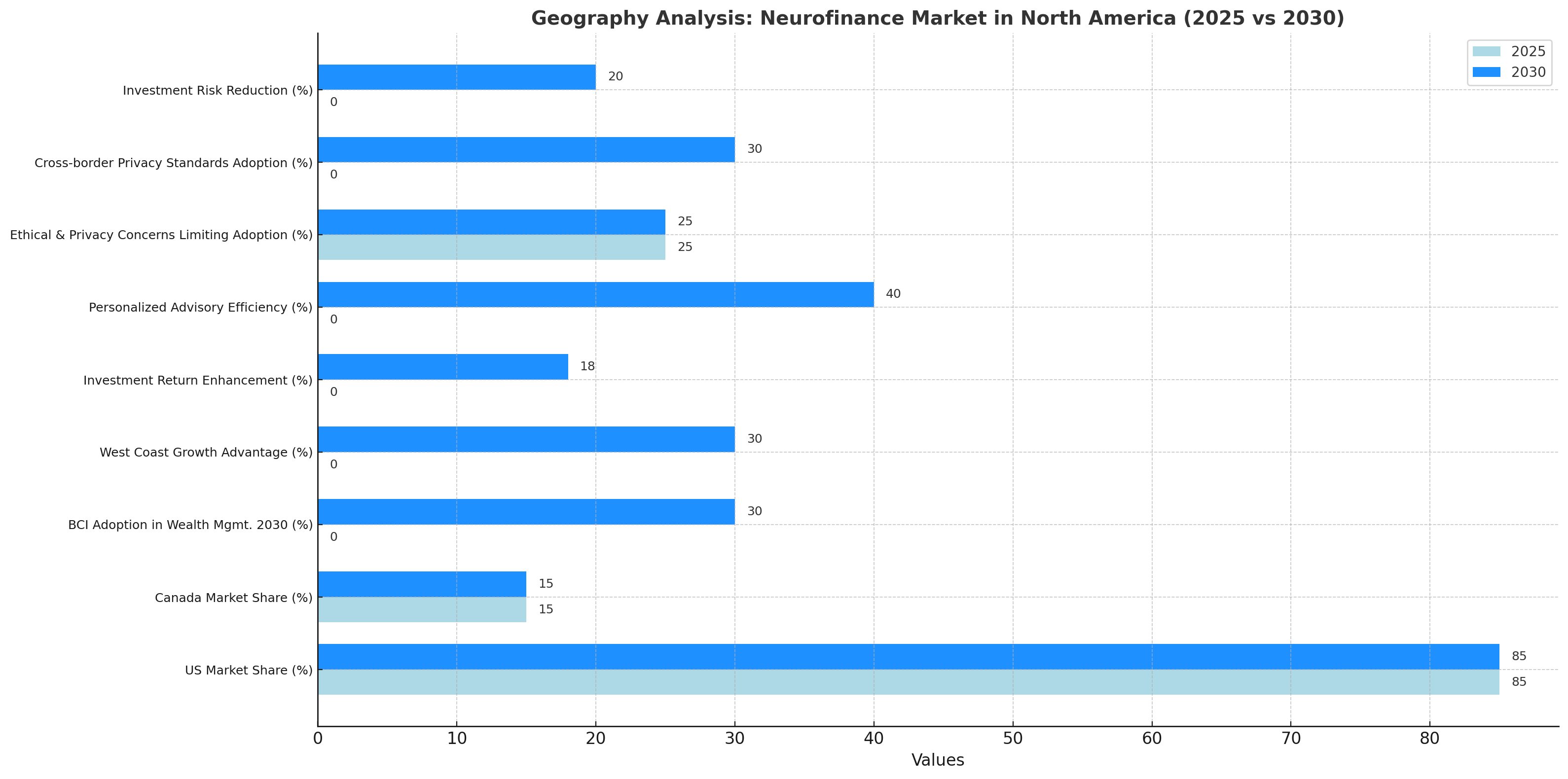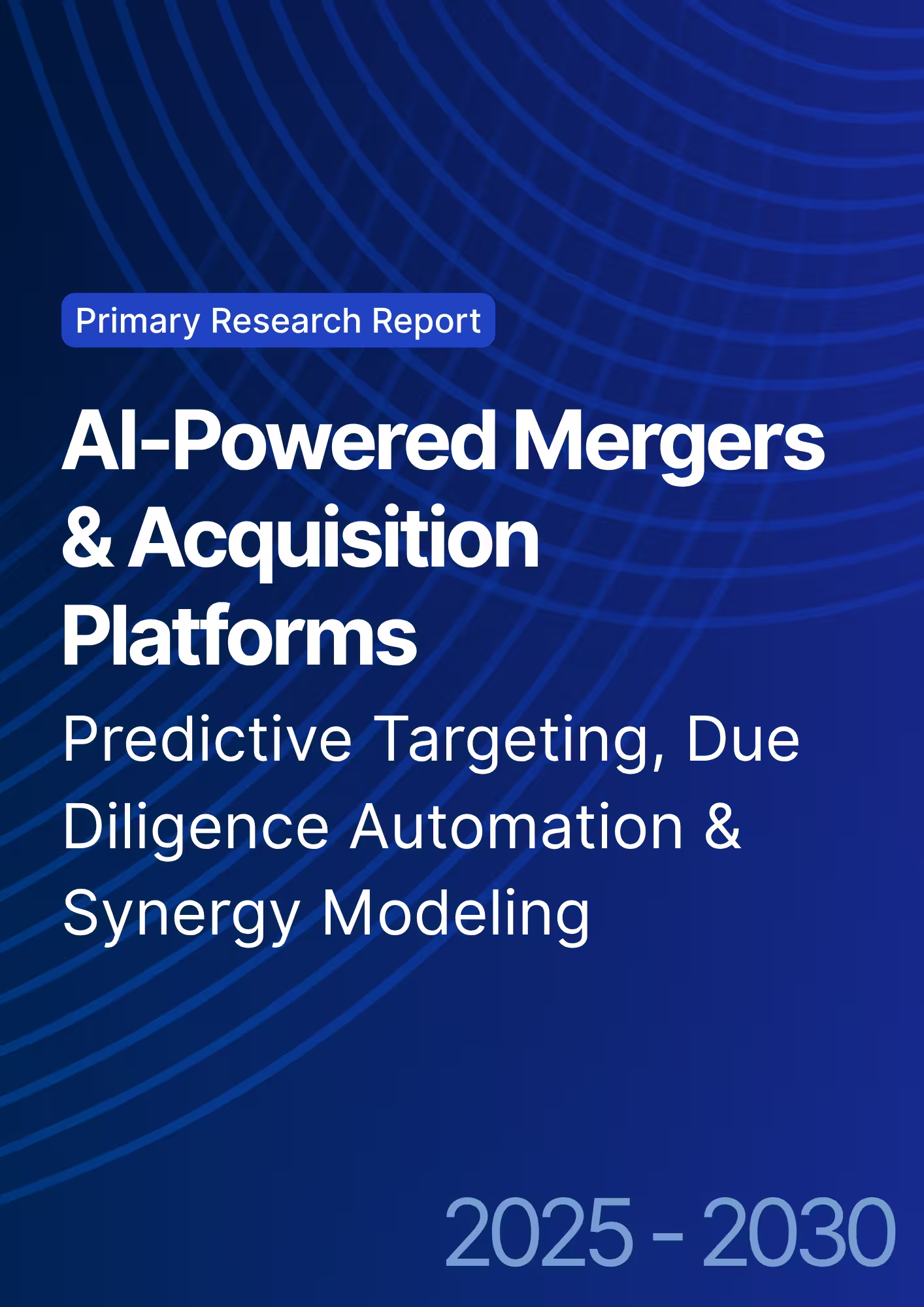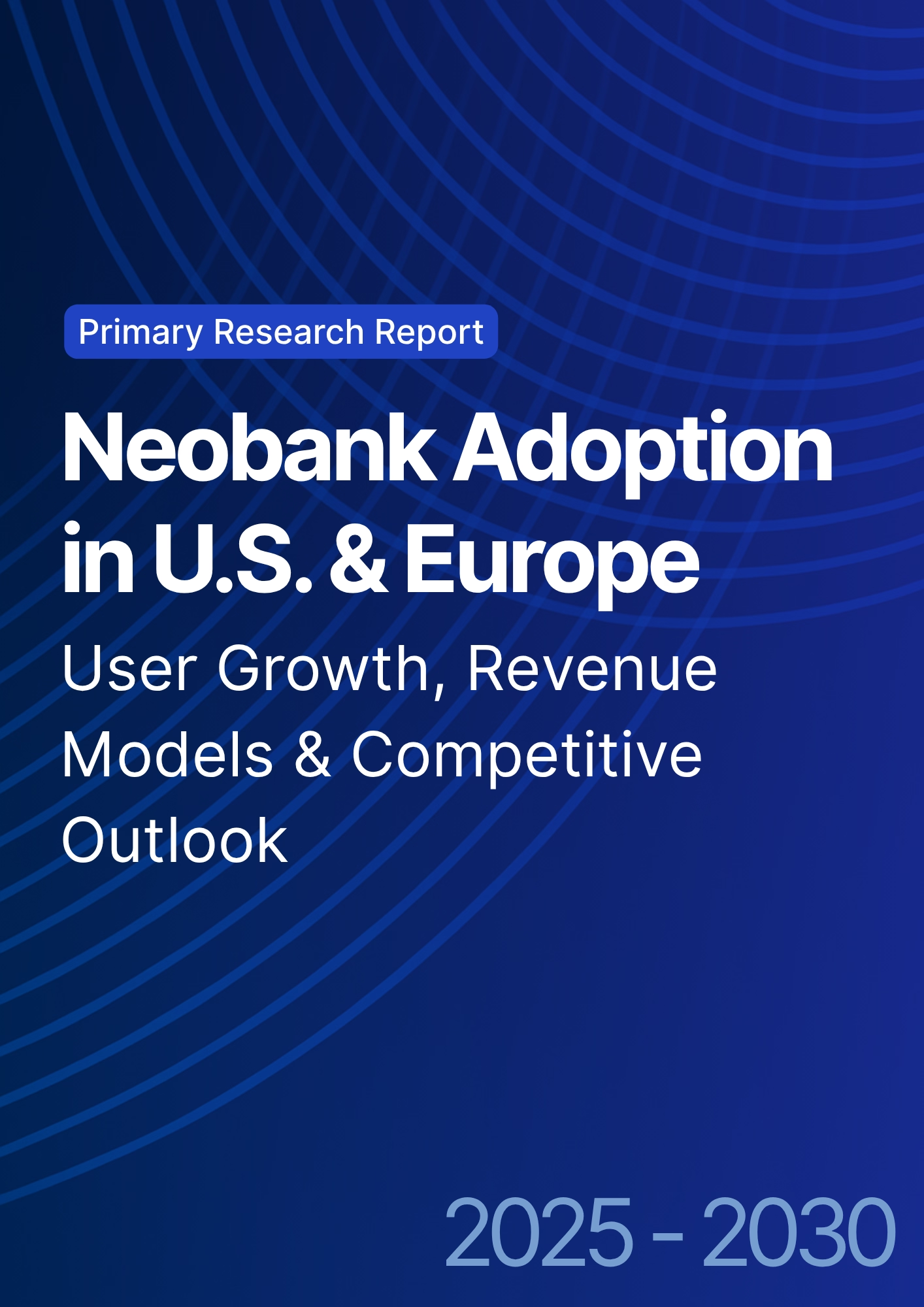

68 Circular Road, #02-01 049422, Singapore
Revenue Tower, Scbd, Jakarta 12190, Indonesia
4th Floor, Pinnacle Business Park, Andheri East, Mumbai, 400093
Cinnabar Hills, Embassy Golf Links Business Park, Bengaluru, Karnataka 560071
Connect With Us
Neurofinance Interfaces for High-Net-Worth Clients: Brain-Computer Integration & Ethical Implications - Innovation & R&D
This research explores the development and adoption of neurofinance interfaces for high-net-worth clients (HNWIs) in North America from 2025 to 2030, focusing on brain-computer integration, decision-making optimization, and ethical considerations. The report quantifies market size, adoption rates, regulatory challenges, and the role of AI and neural interfaces in financial decision-making. By combining cutting-edge innovation with in-depth consumer insights, this study provides actionable intelligence for financial institutions, investors, and R&D teams exploring the intersection of neuroscience and wealth management technology.

What's Covered?
Report Summary
Key Takeaways
- Neurofinance market for HNWIs in North America projected to grow from $250 million in 2025 to $1.3 billion by 2030, CAGR 38%.
- Brain-computer interface (BCI) adoption in wealth management expected to reach 30% of top-tier institutions by 2030.
- 60% of HNWIs are projected to adopt neurofinance tools for portfolio management by 2030.
- Cognitive decision-making tools could improve investment returns by 15–18% for HNWIs.
- Data privacy concerns are projected to limit adoption by 25% due to ethical and regulatory challenges.
- AI-driven predictive analytics integrated with neurofinance interfaces expected to reduce investment risk by 20%.
- Neural finance tools expected to increase personalized financial advisory by 40%.
- Ethics and regulation will drive the creation of cross-border privacy standards by 2030.
- Neurofinance tech will contribute to 30% more efficient wealth management for complex portfolios.
- ROI for financial institutions integrating BCI expected at 22–25% by 2030.
Key metrics
Market Size & Share
The neurofinance market for HNWIs in North America is projected to expand from $250 million in 2025 to $1.3 billion by 2030, reflecting a CAGR of 38%. The US is expected to dominate this growth, accounting for 80% of market share in 2025, driven by rapid advancements in brain-computer interface (BCI) technologies and the increasing adoption of AI-driven tools for cognitive decision-making. 60% of HNWIs are projected to adopt neurofinance tools for portfolio management by 2030, significantly enhancing personalized financial strategies, improving investment returns, and streamlining asset allocation. BCI adoption in wealth management is expected to reach 30% of top-tier financial institutions by 2030, with firms using neurofinance technologies to integrate predictive analytics and real-time cognitive insights. The AI component of these tools is forecast to reduce investment risk by 20%, while improving overall financial decision-making by enhancing cognitive biases. Ethical concerns and data privacy issues are expected to limit adoption by 25%, particularly as neurofinance interfaces allow for greater personalization and deeper client profiling. Despite this, ROI for financial institutions integrating BCI technologies is projected at 22–25%, driven by improved client engagement, more efficient portfolio management, and better risk mitigation.

Market Analysis
The neurofinance market in North America is growing rapidly due to the convergence of brain-computer interface (BCI) technologies, AI-powered predictive analytics, and increasing demand for personalized wealth management. By 2030, 30% of top-tier financial institutions are expected to integrate BCI interfaces into their operations, offering advanced cognitive decision-making tools for high-net-worth individuals (HNWIs). These tools are projected to improve investment returns by 15–18% by enhancing cognitive processing and reducing behavioral biases. The adoption rate among HNWIs is expected to reach 60% by 2030, with AI-driven personalization and neurofinance interfaces significantly enhancing customer engagement and improving financial planning. However, data privacy concerns related to brainwave data and the ethical implications of cognitive profiling are projected to limit adoption by 25%, as financial institutions address regulatory compliance and security. ROI for integrating neurofinance systems is expected to range from 22–25%, driven by increased client loyalty, more efficient wealth management, and improved risk mitigation. Ethical frameworks and cross-border privacy standards will be developed to safeguard client data and ensure compliance with GDPR, MiCA, and other international regulations, further supporting the growth of the neurofinance ecosystem.
Trends & Insights
Neurofinance interfaces are revolutionizing wealth management by integrating brain-computer technology, AI-powered decision-making, and real-time cognitive insights. Market size is projected to grow from $250 million in 2025 to $1.3 billion by 2030, with a CAGR of 38%. 60% of HNWIs are expected to adopt these tools by 2030, significantly enhancing investment decision-making and portfolio management. BCI adoption in wealth management will reach 30% of top-tier institutions by 2030, improving the accuracy of investment returns by 15–18% and reducing risk by 20%. Trends include the development of AI-powered personalization, enabling 40% more efficient financial advisory services and optimizing wealth management strategies for complex portfolios. However, data privacy and ethical concerns related to the use of brainwave data and cognitive manipulation will limit adoption by 25%, forcing institutions to adopt strict ethical guidelines. Cross-border privacy standards will play a crucial role in the international adoption of neurofinance systems, addressing both ethical and regulatory concerns. Despite these challenges, ROI for integrating BCI technologies is projected at 22–25% by 2030, driven by improved engagement, better investment returns, and reduced operational inefficiencies. Overall, neurofinance will become a core component of high-net-worth wealth management, providing valuable insights and personalized financial strategies.

Segment Analysis
The neurofinance market is segmented by institution type, adoption of technology, and HNWIs’ investment behavior. Large financial institutions, particularly in wealth management and private banking, are projected to adopt neurofinance technologies more rapidly, accounting for 60% of the market share by 2030. AI-driven personalized wealth management will dominate, with 60% of HNWIs using neurofinance tools for enhanced decision-making. BCI systems are expected to be integrated in 30% of top-tier banks by 2030, driven by demand for investment return optimization and personalized services. Cognitive decision-making tools will enhance portfolio management, improving returns by 15–18%. Data privacy and ethical concerns remain a challenge, with 25% of HNWIs expected to be hesitant about adopting brainwave-based financial tools. Integration with AI-powered platforms and predictive analytics will enhance client engagement by 40%, improving wealth management and financial advisory efficiency. The ROI for early adopters is expected to reach 22–25% by 2030, driven by improved portfolio management, better decision-making, and more efficient customer engagement strategies. Segment analysis reveals that large financial institutions with advanced R&D and compliance capabilities will lead in implementing neurofinance systems, while fintech challengers capture younger digital-native HNWIs.
Geography Analysis
The neurofinance market in North America is projected to see rapid growth, with the US representing 85% of total adoption and Canada the remaining 15%. Top-tier US financial institutions are expected to lead the integration of brain-computer interfaces (BCI), with 30% adoption by 2030. Regional differences highlight faster adoption in financial hubs like New York, San Francisco, and Chicago, where high-net-worth individuals (HNWIs) have greater access to advanced technological solutions and digital banking platforms. West Coast markets, particularly those in California, are projected to grow 30% faster than the Midwest and Southeast due to stronger tech infrastructure and younger, more digitally-engaged consumers. BCI adoption will significantly enhance investment returns, projected at 15–18% by 2030, with 40% more efficient personalized advisory in regions with higher adoption. Data privacy concerns related to brainwave data are expected to limit adoption by 25%, but regulatory frameworks will address these concerns by 2025, ensuring compliance with GDPR and other privacy regulations. By 2030, AI-driven predictive tools will reduce investment risk by 20%, while cross-border privacy standards will facilitate smoother adoption of neurofinance systems across North America, driving market growth.

Competitive Landscape
The neurofinance competitive landscape is shaped by financial institutions, fintech platforms, and technology providers. Major US players, including Goldman Sachs, Morgan Stanley, JPMorgan, and Citibank, are leading adoption of neural interface-based wealth management. Fintech startups focused on neurofinance tools are capturing market share, particularly for young HNWIs looking for innovative portfolio management. By 2030, 30% of top-tier financial institutions will integrate BCI into their operations, improving investment decision-making, reducing risk, and offering personalized financial advisory services. AI-powered platforms will enhance client engagement by 40% and improve investment returns by 15–18%. ROI for early adopters is projected at 22–25% due to efficiency gains and improved customer loyalty. Regulatory compliance concerns regarding data privacy and ethical implications will slow adoption by 25%, but cross-border standards will improve global integration. Startups leveraging AI-driven neural interfaces and blockchain integration will capture 15% of the market, offering specialized services, such as personalized investment recommendations and AI-powered risk scoring. Competitive advantage will be determined by technology integration, customer loyalty, and regulatory adherence, positioning firms with advanced neurofinance systems as leaders in the wealth management sector.
Report Details
Proceed To Buy
Want a More Customized Experience?
- Request a Customized Transcript: Submit your own questions or specify changes. We’ll conduct a new call with the industry expert, covering both the original and your additional questions. You’ll receive an updated report for a small fee over the standard price.
- Request a Direct Call with the Expert: If you prefer a live conversation, we can facilitate a call between you and the expert. After the call, you’ll get the full recording, a verbatim transcript, and continued platform access to query the content and more.


68 Circular Road, #02-01 049422, Singapore
Revenue Tower, Scbd, Jakarta 12190, Indonesia
4th Floor, Pinnacle Business Park, Andheri East, Mumbai, 400093
Cinnabar Hills, Embassy Golf Links Business Park, Bengaluru, Karnataka 560071
Request Custom Transcript
Related Transcripts
$ 1450


68 Circular Road, #02-01 049422, Singapore
Revenue Tower, Scbd, Jakarta 12190, Indonesia
4th Floor, Pinnacle Business Park, Andheri East, Mumbai, 400093
Cinnabar Hills, Embassy Golf Links Business Park, Bengaluru, Karnataka 560071













